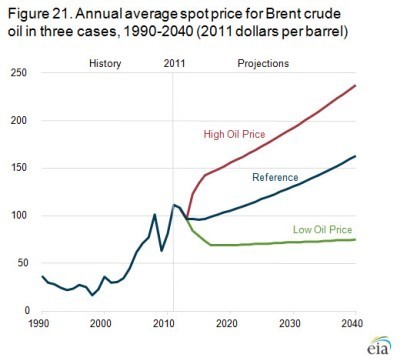Jeremie Averous's Blog, page 107
April 4, 2015
The Single Key Ingredient of Outperforming Organizations
Empathy!
 Simon Sinek writes in ‘Leaders Eat Last‘: “There is a pattern that exists in the organizations that achieve the greatest success, […] the ones with the highest loyalty and lowest churn and the ability to weather nearly every storm or challenge. These exceptional organizations all have cultures in which the leaders provide cover from above and the people on the ground look out for each other. This is the reason they are willing to push hard and take the kinds of risks they do. And the way any organization can achieve this is with empathy.”
Simon Sinek writes in ‘Leaders Eat Last‘: “There is a pattern that exists in the organizations that achieve the greatest success, […] the ones with the highest loyalty and lowest churn and the ability to weather nearly every storm or challenge. These exceptional organizations all have cultures in which the leaders provide cover from above and the people on the ground look out for each other. This is the reason they are willing to push hard and take the kinds of risks they do. And the way any organization can achieve this is with empathy.”
Only empathy provides the comfort of a safety base for people to take risk and explore new areas, and devote themselves 150% to their tasks. Only empathy provides the linkage between people that allows them to resist successfully to hardships. I have observed too often that when people start being afraid about what could happen to them, their productivity and involvement drops abysmally – and we can’t blame them for that, because their thoughts will be fully occupied by this concern. The only way to keep people involved at their best it to provide moral security in the form of organizational empathy.
How much does your organization deploy empathy today? What can you do to increase organizational empathy?
April 2, 2015
What the Single Most Important Difference Between Small and Large Companies is
“The most important difference between big and small companies is the amount of time running versus creating. A desire to do more creating is the right reason to want to join your [small] company” writes Ben Horowitz in book ‘The Hard Thing About Hard Things‘.
 Of course, creativity is essential to the success of small companies because they need to be agile and respond to the needs of the marketplace to survive. Creating something is intrinsically part of their DNA. Large companies prefer the comfort of predictability and will often discourage too highly creative endeavors even if they profess to foster innovation. This is of course an issue for creative companies that grow too fast and might become bureaucratic before they realize it. It must be a constant challenge at Facebook or Google to maintain a creative atmosphere in spite of the rapidly increasing size of the organization.
Of course, creativity is essential to the success of small companies because they need to be agile and respond to the needs of the marketplace to survive. Creating something is intrinsically part of their DNA. Large companies prefer the comfort of predictability and will often discourage too highly creative endeavors even if they profess to foster innovation. This is of course an issue for creative companies that grow too fast and might become bureaucratic before they realize it. It must be a constant challenge at Facebook or Google to maintain a creative atmosphere in spite of the rapidly increasing size of the organization.
Another reason is that it is more difficult to work as a cross functional team in large organizations that in small companies, and you need to ask permission before doing anything like this. Creativity comes from mixing ideas and viewpoints, hence it is fostered naturally in small organizations where everyone works together.
Finally, creative people will then possibly find more satisfaction when working in small organizational structures. With the Fourth Revolution, small organizational structures become much more viable. Hence staying creative will remain easier in the Collaborative Age.
March 31, 2015
How Facebook Creates Value for the Real Economy
Facebook commissioned a study to Deloitte that shows that it adds more than $200 billion to the global economy and 4.5 million jobs. Of course that might be a bit inflated being a study commissioned by the culprit, but that still makes one think about the global value generated by a new tool that was created in 2004 (The report, though, does not comment on the possible value and jobs it destroyed elsewhere).
 So what are the areas that have been considered for this evaluation?
So what are the areas that have been considered for this evaluation?
In this study, there are mainly three:
65%: marketing effects of course (creating value through increased marketing)
22%: connectivity effects (consumers are enticed to buy new terminals to stay connected on Facebook!)
13%: platform effects (creating value by developing and selling apps for the facebook platform)
The percentages vary depending on the country, for example in India, the connectivity effect is relatively much larger.
Facebook seems to be on its way to develop a sustainable business model, creating value and jobs while enabling many remote connections, conversations and sharing that would have been impossible to imagine even ten years ago. Like another candidate, Google, is it becoming a candidate to be one of our new institutions of the Collaborative Age?
Here is the link to the full report including the methodology.
March 28, 2015
What Stops Change in Large Organizations
“An early lesson I learned in my career was that whenever a large organization attempts to do anything, it always comes down to a single person who can delay the entire project. […][Even] Small, seemingly minor hesitations can cause fatal delays” says Ben Horowitz in book ‘The Hard Thing About Hard Things‘.
 I have the same experience and I find this quote very much to the point. In my executive and consulting years I have had much experience in large organizations of situations where an entire team wanted to change something, only to get rebuffed by a single person generally in a position of authority, or even a member of the team just not doing her work.
I have the same experience and I find this quote very much to the point. In my executive and consulting years I have had much experience in large organizations of situations where an entire team wanted to change something, only to get rebuffed by a single person generally in a position of authority, or even a member of the team just not doing her work.
The decision to stop was generally taken for inadequate reasons – from selfish career considerations to belief that the person was more competent than the entire team proposing the change.
What should a leader do when a team comes up with enthusiasm with a proposal for a change that should greatly help the organization moving forward? In my view, give the keys and the responsibility to the team to implement that change, making sure that the interests of the rest of the organizations are protected. Empowering people is the best way to get great things done.
This bears a lesson for change managers – one of the most critical actions is to identify early those people that will slow down or even stop change. Sometimes they are easy to identify, sometimes they are hidden. Sometimes they are in positions of authority, sometimes they are not. Still they are always the cause for most change derailment in large organizations. Focus of change management should be to make sure they do not impede transformation.
March 26, 2015
How the Implementation of Holacracy Appears Challenging
As we reported in a post about one year ago, a significant holacracy experiment is going on at Zappos. Lately reports have not been so favorable about the experiment as for example this Quartz post ‘Holacracy at Zappos: It’s either the future of management or a social experiment gone awry’.
 Basically employees have no more title, they have temporary positions and they need to operate more like entrepreneurs on an internal market (quite contrary, by the way, to the traditional theory of the firm that states that companies are there because they minimize the cost of internal transactions compared to the open market – so why do we keep a formal organization?).
Basically employees have no more title, they have temporary positions and they need to operate more like entrepreneurs on an internal market (quite contrary, by the way, to the traditional theory of the firm that states that companies are there because they minimize the cost of internal transactions compared to the open market – so why do we keep a formal organization?).
The funny thing is that it is the number of rigid rules in the holacracy concept that seem to stop employees in their tracks. Instead of having a fluid organization with increased freedom it seems on the contrary, to stop people’s creativity and engagement.
Finally, according to the article, “Zappos executives […] explain that Holacracy is, for now, a catalyst but may not be the long-term solution in moving toward self-organization.” At the same time it is a great source of positive PR for Zappos.
I doubt whether implementing strict rules (as developed by a technical person) can resolve all organizational problems. While developing people’s entrepreneurship they need to get more freedom and not be constrained too much by rules. Let’s continue to follow what happens!
March 24, 2015
Why ‘Embedded Consulting’ Delivers Better Results for Enterprise Transformation
As consultant I have seen two extremes when it comes to consulting interventions regarding enterprise transformation:
The ‘embedded consulting’ with one or two ‘trusted advisors’ to Senior Management, most of the work done by employees temporarily assigned to the project and a very limited number of specialized consultants focused on specific capabilities that are lacking in the organization,
A large team of consultants coming in and doing most of the work , delivering finished products (typically the business model of large consulting firms).

Should the consultant be the player or the person supporting the player?
There are a few intermediate options still in general it is possible to recognize the pattern of one or the other extreme.
I have observed that the first approach was by far superior when it comes to sustainable results in the organization.
The reasons for this are actually quite straightforward:
In option 1, the organization shows actual commitment by assigning resources to the transformation project. It shows commitment of the top of the organization, that management walks the talk and this can only be favorable to actual implementation,
The employees directly involved in devising the transformation are the best spokespersons for what they have setup. As they are demobilized from the transformation project and come back to their usual position they instantly become a strong network of proponents of change embedded in the organization,
As changes are devised by employees for the benefit of the organization, they are in general more pragmatic and closer to the needs of the organization.
Option 2 remains valid in cases in other projects where the organization’s DNA and culture is not directly touched. For enterprise transformation projects it does not seem to be the best solution, although it might appeal to the senior executives through the power of the brand of some large consulting companies.
A common argument is that only option 2 can deliver disruptive transformation. I do not agree, because employees are often open, much more creative and knowledgeable on what could be done, and their talent can be released by a specific, punctual intervention opening new possibilities.
If you have a project to transform or upgrade your organization, prefer to involve your employees supported by a limited number of senior and specialized consultants. With ‘embedded consulting’ the transformation will be sustainable, much better accepted and overall much more successful.
March 21, 2015
Why Finding Meaning in our Life Becomes Harder
As the complexity and unpredictability of our world increases significantly, and has even been accelerating in the past few years, it becomes more difficult to find our life’s meaning and purpose.

How can we find our way in an ever larger labyrinth?
One of the reasons is the multiplication of choices that are offered to us – like excessively lengthy restaurant menus, choice kills the choice. As our freedom increases, it is naturally more difficult to fix ourselves on a single purpose.
One other reason is the unpredictability and the occurrence of freak events that change significantly the world around us: how can we steer a straight course over years and decades in this context?
This all happens at the same time where personal development has never been so popular, requiring everyone to find passion and purpose in life and follow those. As a result, our general level of stress increases dramatically, leading inevitably to serious societal problems.
The solution might be not to find one’s purpose in absolute among an infinity of choices, but to find our purpose close to what we do on a daily basis, which restricts the field of search. I will elaborate on this key ideas in a few future posts.
Some references from previous blog posts: What we can learn from complex systems to understand today’s world, Why, even in a Complex World, you Need to Head Towards your Purpose!
March 19, 2015
How to Create Disruptive Change
Following our post ‘Why Experts Are Always Wrong About the Future‘, how can we overcome the limitations of expert forecasts, and create the disruptive changes that puzzle experts? Paul Graham a famous Venture Capitalist, shares some insights in an interesting post ‘How to Be an Expert in a Changing World‘. The post is worth reading in its entirety for its insights.
 Paul Graham starts from the same position as us: “Change that matters usually comes from an unforeseen quarter. So I don’t even try to predict it“. And he continues, “we are full of obsolete beliefs“. Hence he concludes, “the best strategy is simply to be aggressively open-minded. Instead of trying to point yourself in the right direction, admit you have no idea what the right direction is, and try instead to be super sensitive to the winds of change“.
Paul Graham starts from the same position as us: “Change that matters usually comes from an unforeseen quarter. So I don’t even try to predict it“. And he continues, “we are full of obsolete beliefs“. Hence he concludes, “the best strategy is simply to be aggressively open-minded. Instead of trying to point yourself in the right direction, admit you have no idea what the right direction is, and try instead to be super sensitive to the winds of change“.
There, Paul makes gives us two important practical pointers we can use:
“If you’re sufficiently expert in a field, any weird idea or apparently irrelevant question that occurs to you is ipso facto worth exploring […] When an idea is described as crazy, it’s a compliment“
“focus initially on people rather than ideas. Though the nature of future discoveries is hard to predict, I’ve found I can predict quite well what sort of people will make them. Good new ideas come from earnest, energetic, independent-minded people“.
Thus become expert in a domain, explore crazy ideas and hang out with other people prone to the same tendencies – a recipe for shaping the future in a disruptive manner?
March 17, 2015
Why Experts Are Always Wrong About the Future
I am always puzzled about the failure of experts to predict anything. Take for example the sudden drop of oil price: most experts agreed one year ago that high prices were here to stay (and increase further); and the same experts now explain with the same smile and assurance that they see prices go down even more as they already halved in 6 months time. How come they can change their mind so quickly (and without shame it seems!)?

A random oil price forecast of 2011. How come the current price is lower than the lowest?
The reason is of course simple. Experts are experts on an earlier version of the world. They are experts on what happened, not on what will happen. In addition, in our ever more complex world, disruptive changes are more prevalent, leading to unexpected surprises – surprises not seen before that experts can’t of course foresee.
The thing is, future can’t really be forecast when it comes to factors that depend on human interaction such as markets and societies. Financial traders know this when it comes to share prices. Of course depending on what you want to predict, it will have some inertial factors attached to it that will make change more or less quick. Still the future remains unpredictable.
So instead of trying to predict the future, experts should certainly try to better analyze and explain past and present, and more importantly, devise mechanisms to dampen as much as possible the inevitable disruptions that shake our world.
Let’s come back to my heuristics already developed in ‘How to Overcome the Experts’ Confidence Conundrum?‘: when all experts agree on something and it becomes a kind of a consensus, then there is a good chance that there will be a significant change. It is time to take a contrarian position. Thus when I’ll see that everyone finally agrees that cheap oil is there to stay, then will be the moment to invest in oil companies – oil price is due to increase!
March 14, 2015
How Following Your Passion is a New Concept
Following on our previous post “Why Following Your Passion is not (Necessarily) the Solution“, I was inpired by the author Cal Newport to use Google Ngram viewer to look at the history of the concept. The result is self-explanatory!

Follow your passion is a very new concept that exploded recently
So, following your passion is an extremely modern concept (currently very trendy it seems) in particular when compared with some other related concepts such as life purpose, love work:
In summary we’ve been having life purpose for a century, we’ve been substantially loving work for even more than that, but we’ve only considered following our passion for two decades. Isn’t that strange? I guess we can all draw an interesting conclusion from this observation!




